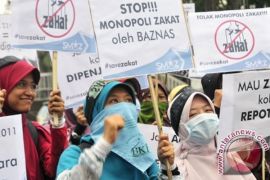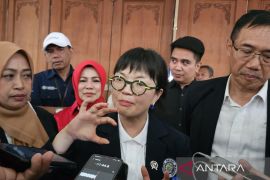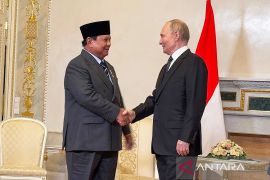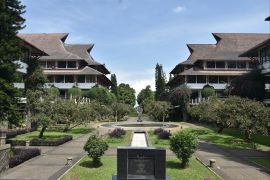"We will understand more about the advantages and disadvantages of joining the TPP," Darmin Nasution said here on Monday.
He pointed out that the government could give an opinion on Indonesias participation in the TPP after it receives the results of a study on the TPP.
"I cannot comment further on this issue," he noted.
However, he observed, it would be better for Indonesia to continue bilateral and multilateral trade commitments that have been already established.
The Chairman of the Expert Team of the Vice President, Sofjan Wanandi, had earlier predicted that the TPP would be disbanded.
"The US President-Elect, Donald Trump, has signaled that he would follow a policy of protectionism," he reminded.
He urged the government to strengthen economic fundamentals as part of the efforts to anticipate global pressures and to compete with other countries.
"The government should strengthen the domestic industry to compete with imported products," he remarked.
Indonesia earlier proposed a new cooperation forum in the form of an ASEAN-Pacific Alliance as an alternative to the Trans-Pacific Partnership (TPP), whose continuation is now in doubt after Trump pledged to pursue protectionism.
"If the TPP failed to come to reality, then why not an ASEAN and Pacific Alliance? It would be better than the TPP," Indonesian Vice President M Jusuf Kalla underlined on the sidelines of the summit meeting of the Asia Pacific Economic Cooperation (APEC) forum here on Saturday.
The Pacific Alliance groups Mexico, Peru, Chile and Colombia. Among the four countries, Colombia is not an APEC member.
The TPP was established by a number of Asia Pacific countries, but not including Indonesia, although the country has expressed an interest in joining it.
The TPP is a trade agreement among twelve of the Pacific Rim countries, notably not including China. The finalized proposal was signed on 4 February 2016 in Auckland, New Zealand, concluding seven years of negotiations.
It is currently awaiting ratification to come into force. The 30 chapters of the agreement aim to "promote economic growth; support the creation and retention of jobs; enhance innovation, productivity and competitiveness; raise living standards; reduce poverty in the signatory countries; and promote transparency, good governance, and enhanced labor and environmental protections."
The TPP contains measures to lower both non-tariff and tariff barriers to trade, and establish an investor-state dispute settlement mechanism.
The TPP began as an expansion of the Trans-Pacific Strategic Economic Partnership Agreement (TPSEP or P4) signed by Brunei, Chile, New Zealand and Singapore in 2005.
Beginning in 2008, additional countries joined the discussion for a broader agreement: Australia, Canada, Japan, Malaysia, Mexico, Peru, the United States and Vietnam, bringing the total number of countries participating in the negotiations to twelve. Current trade agreements between participating countries, such as the North American Free Trade Agreement, will be reduced to those provisions that do not conflict with the TPP or provide greater trade liberalization than the TPP.(*)
Editor: Heru Purwanto
Copyright © ANTARA 2016











